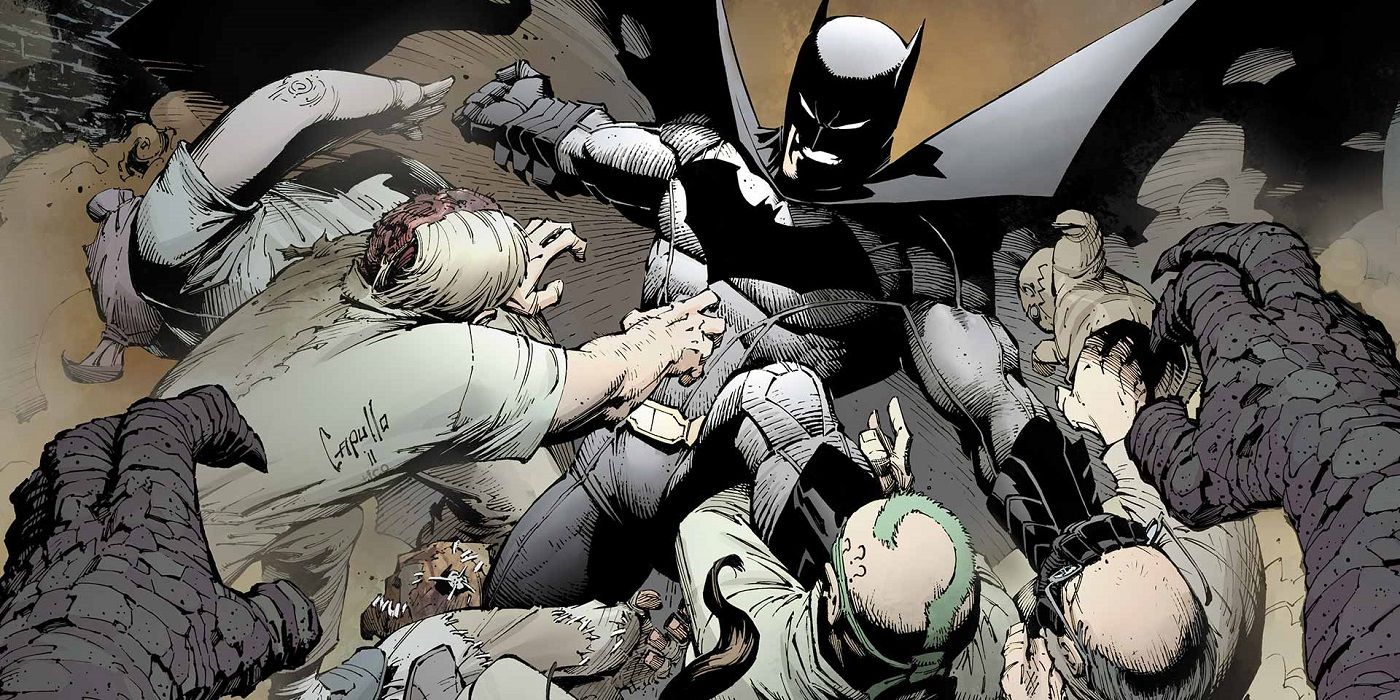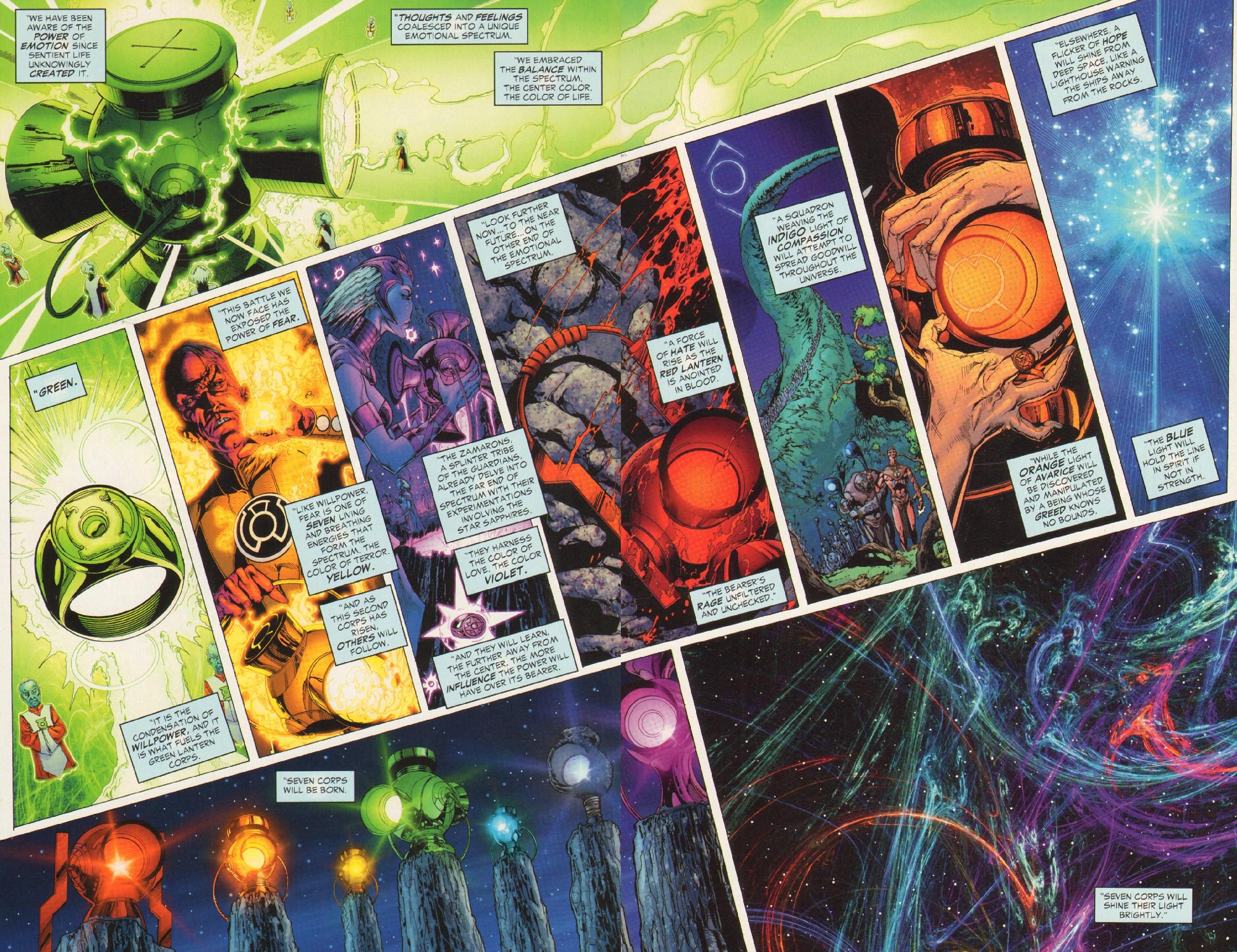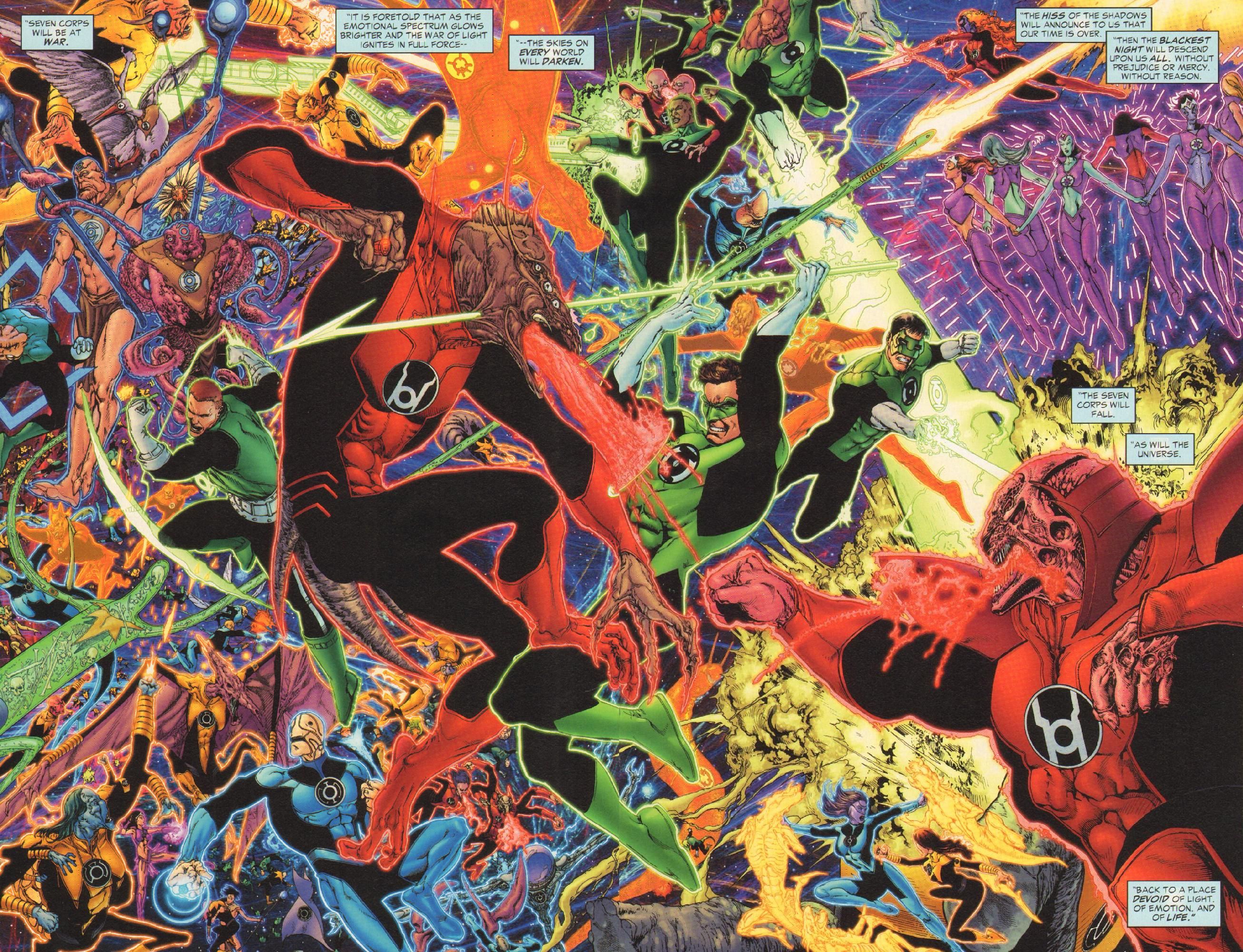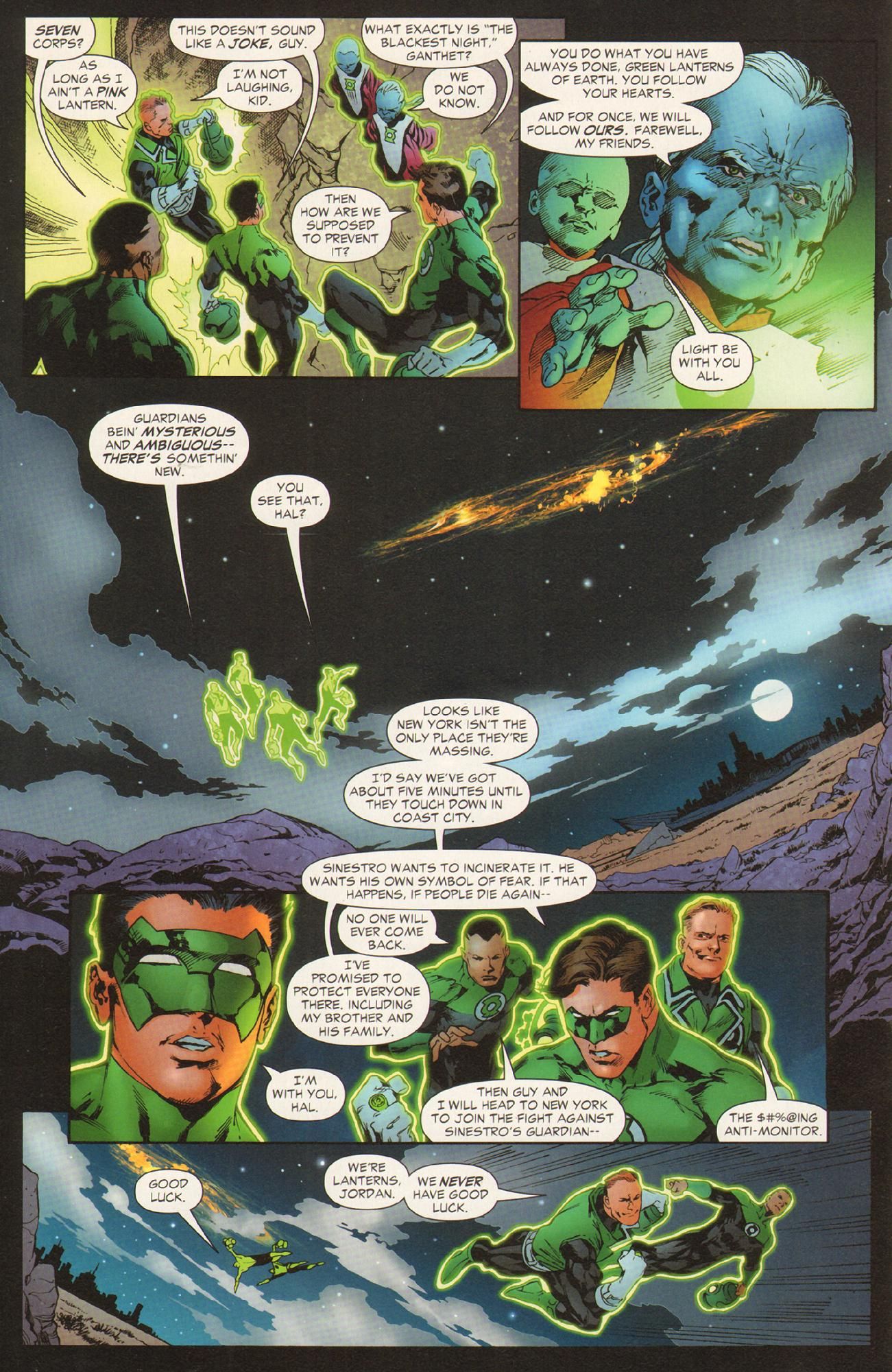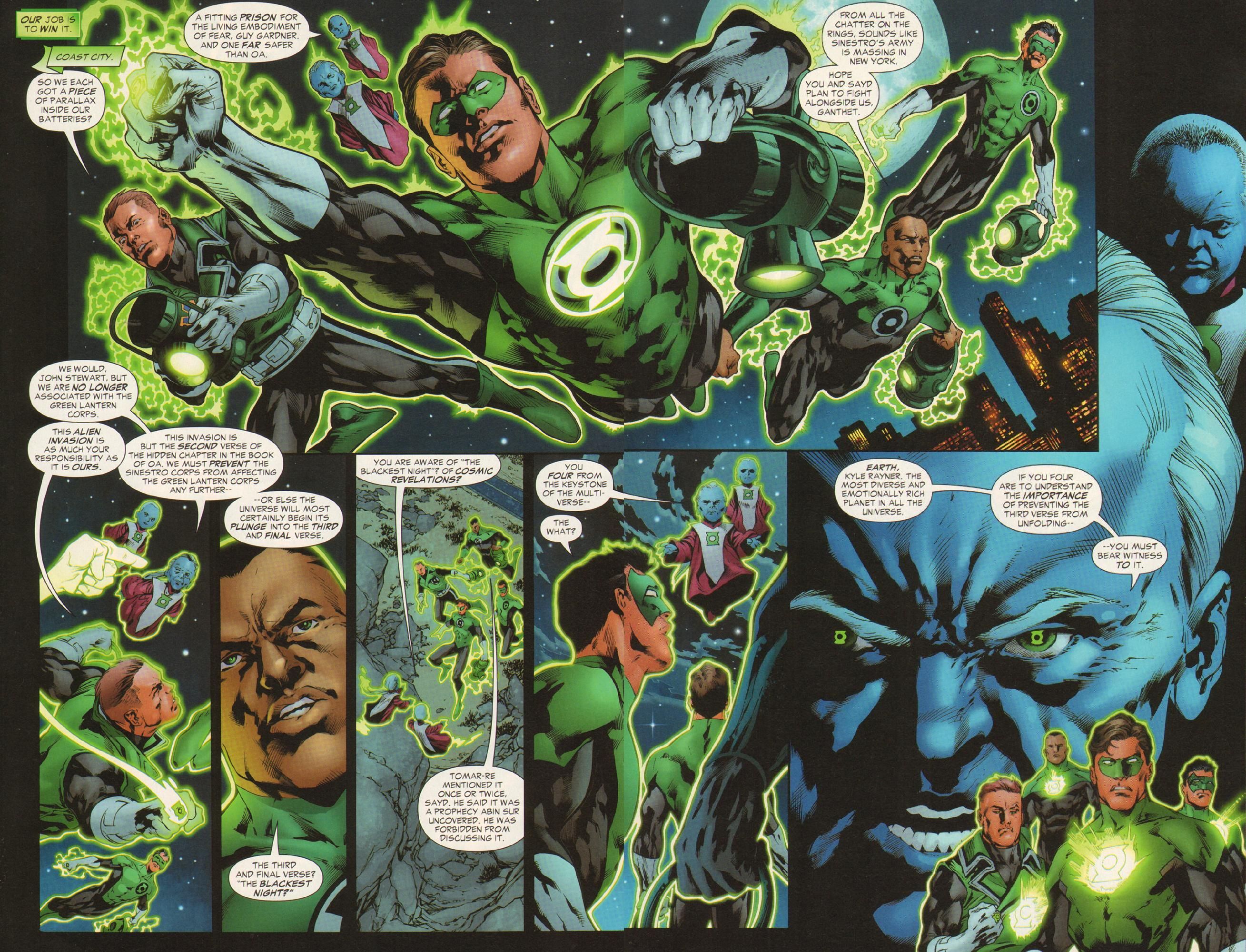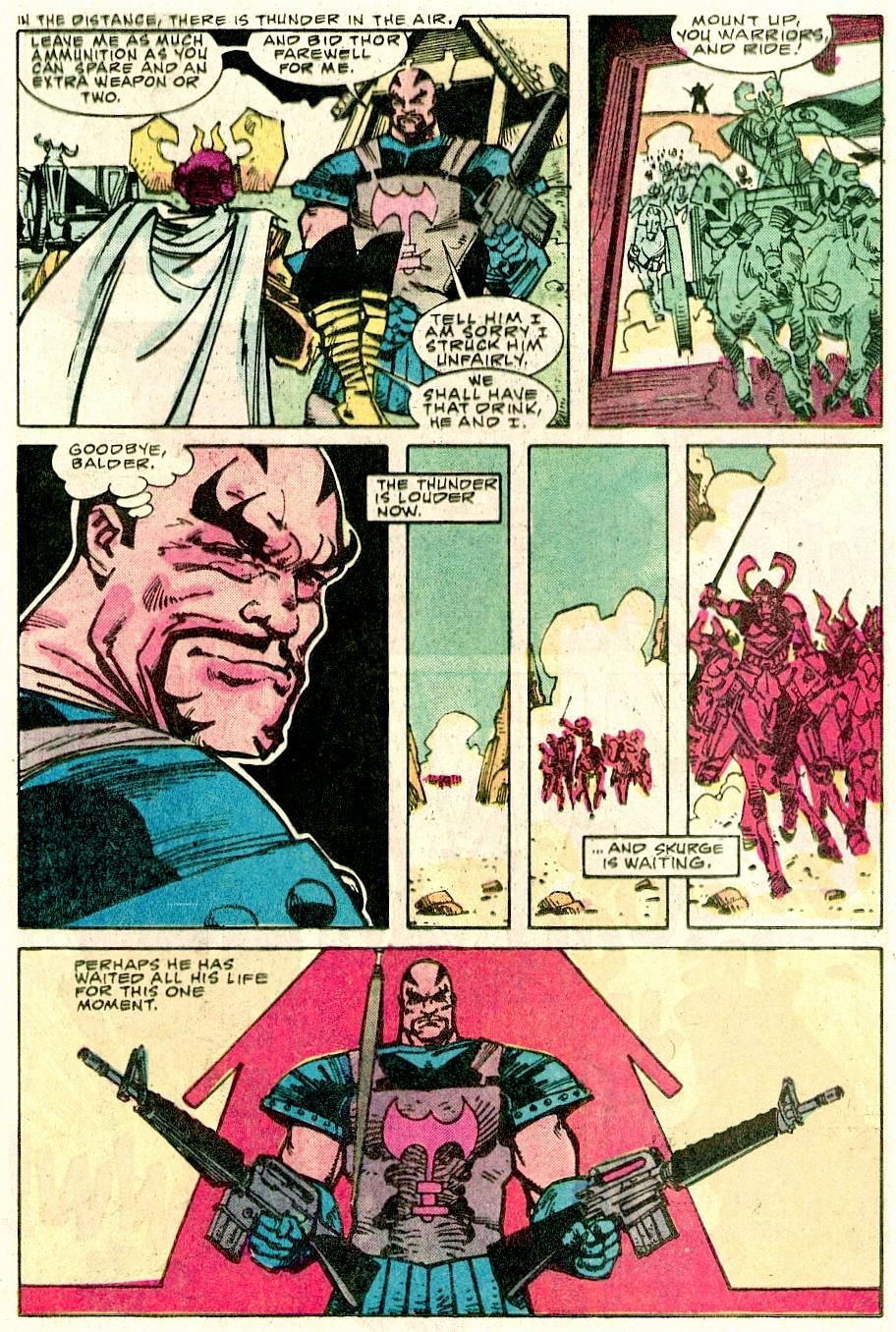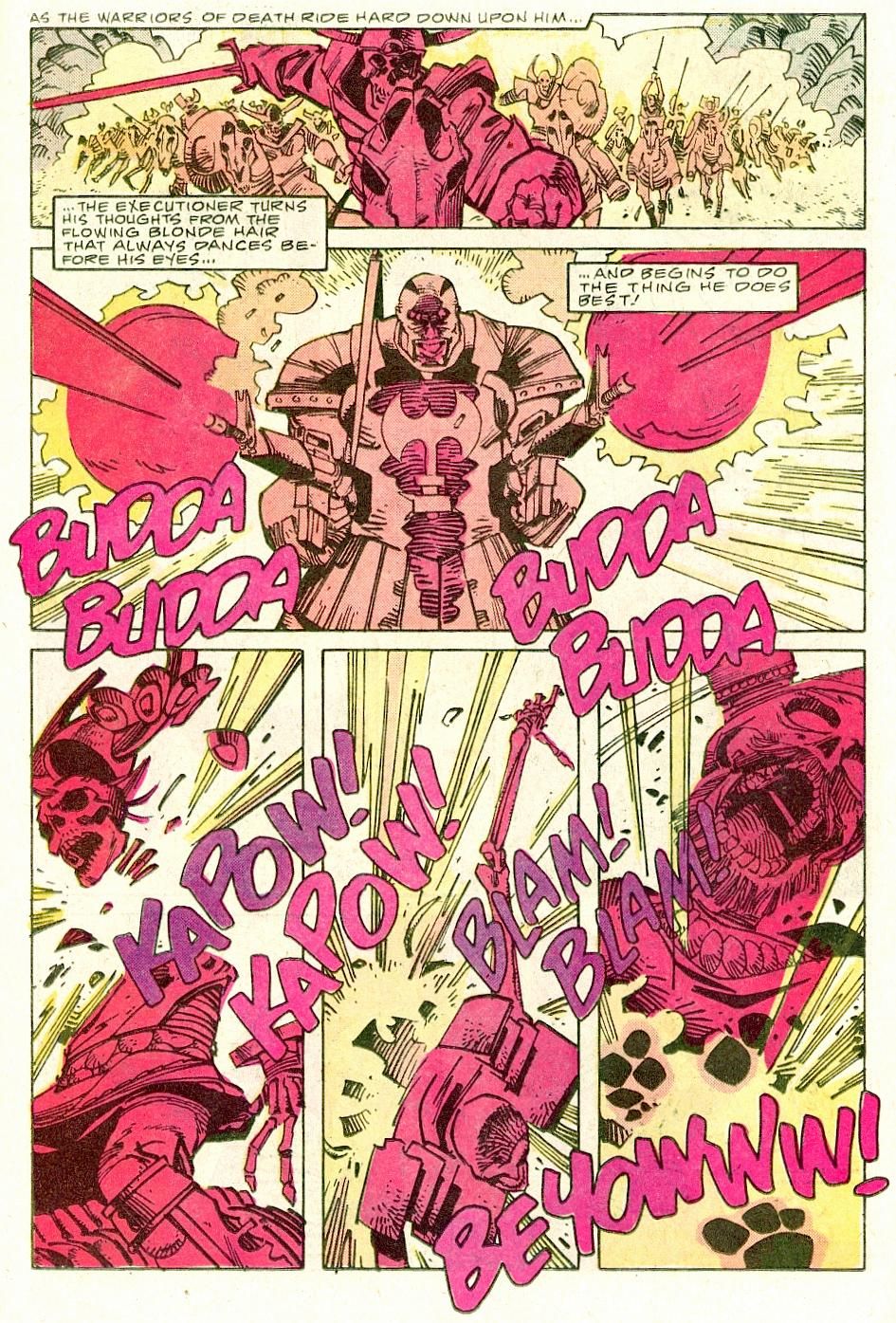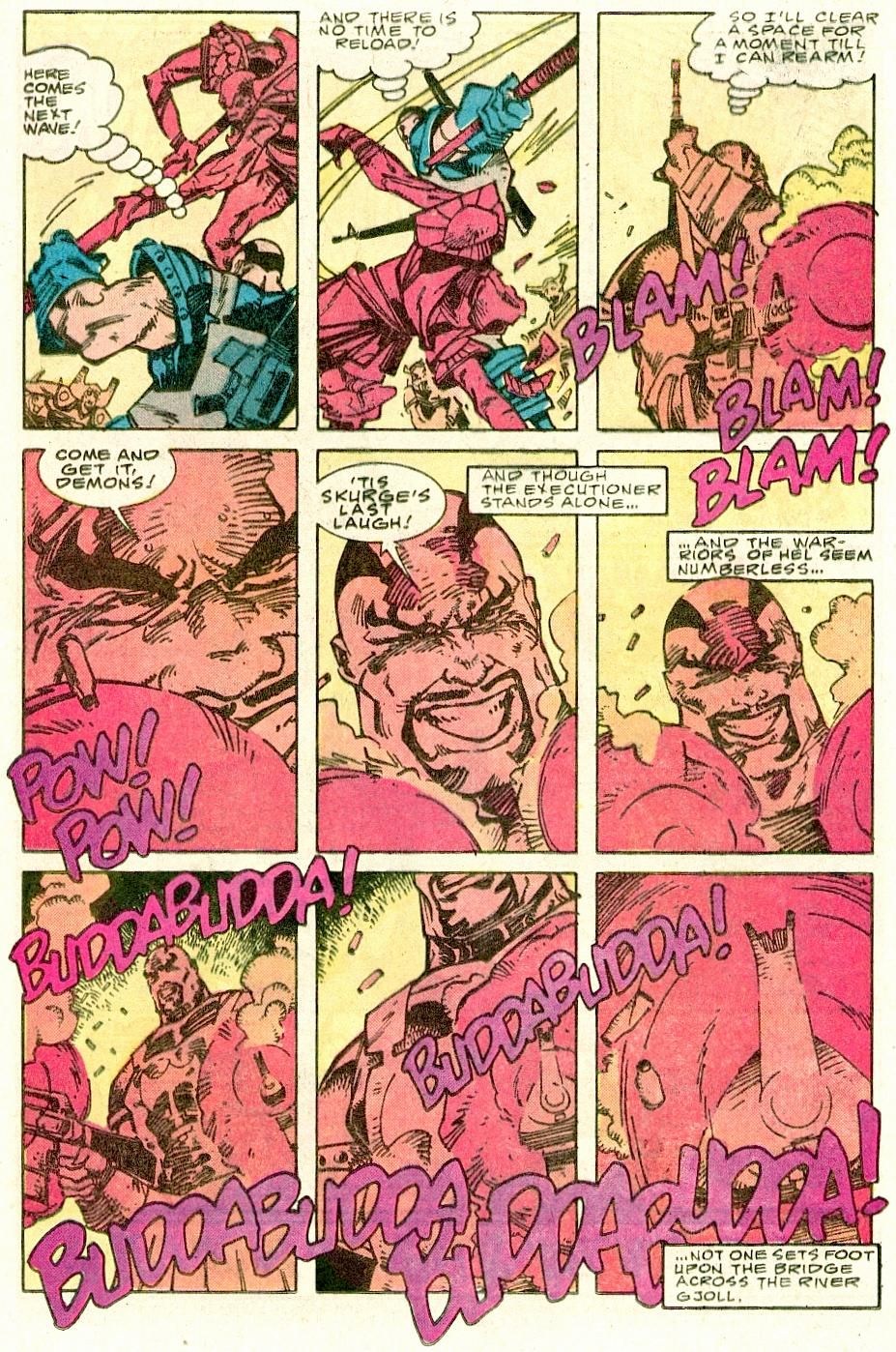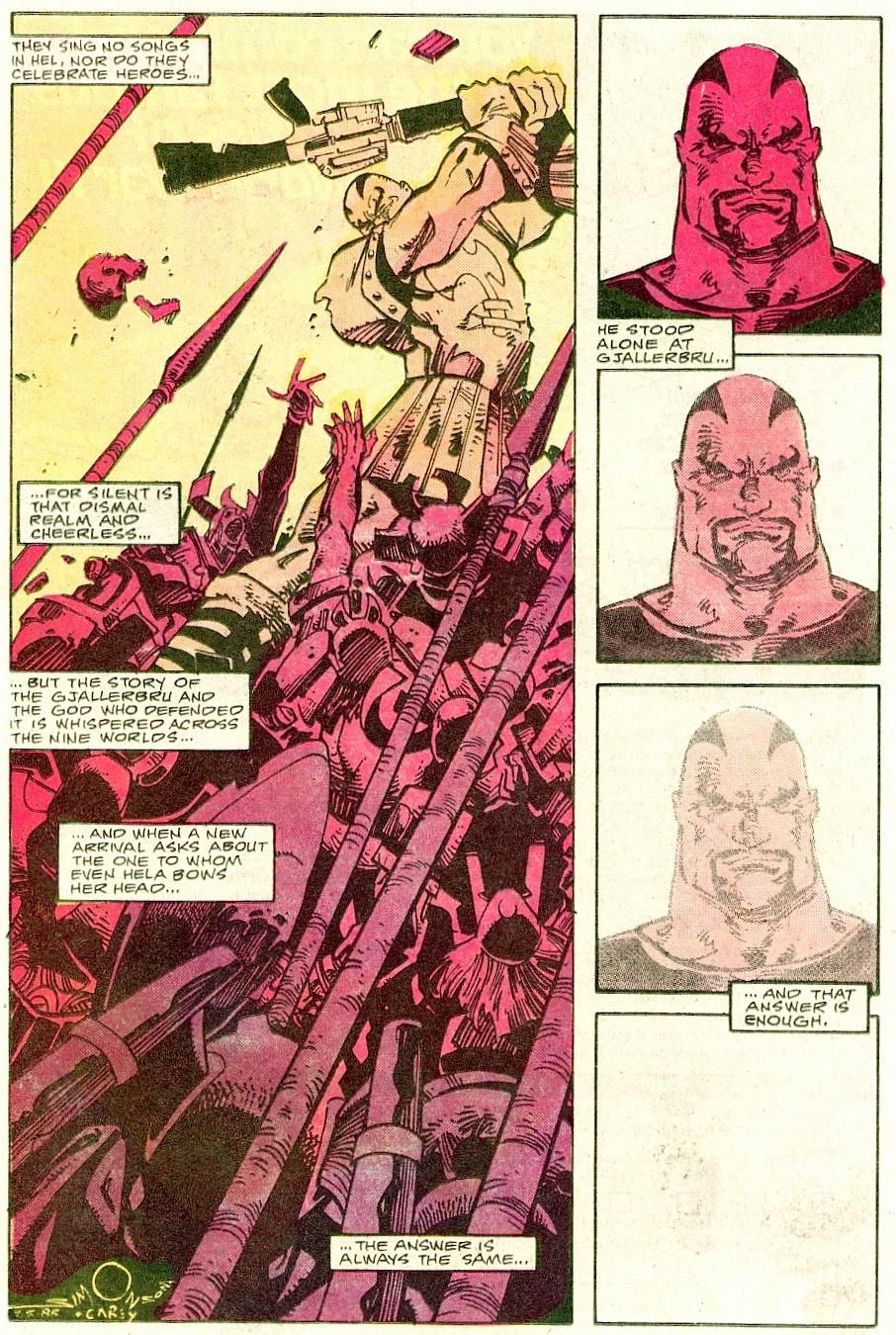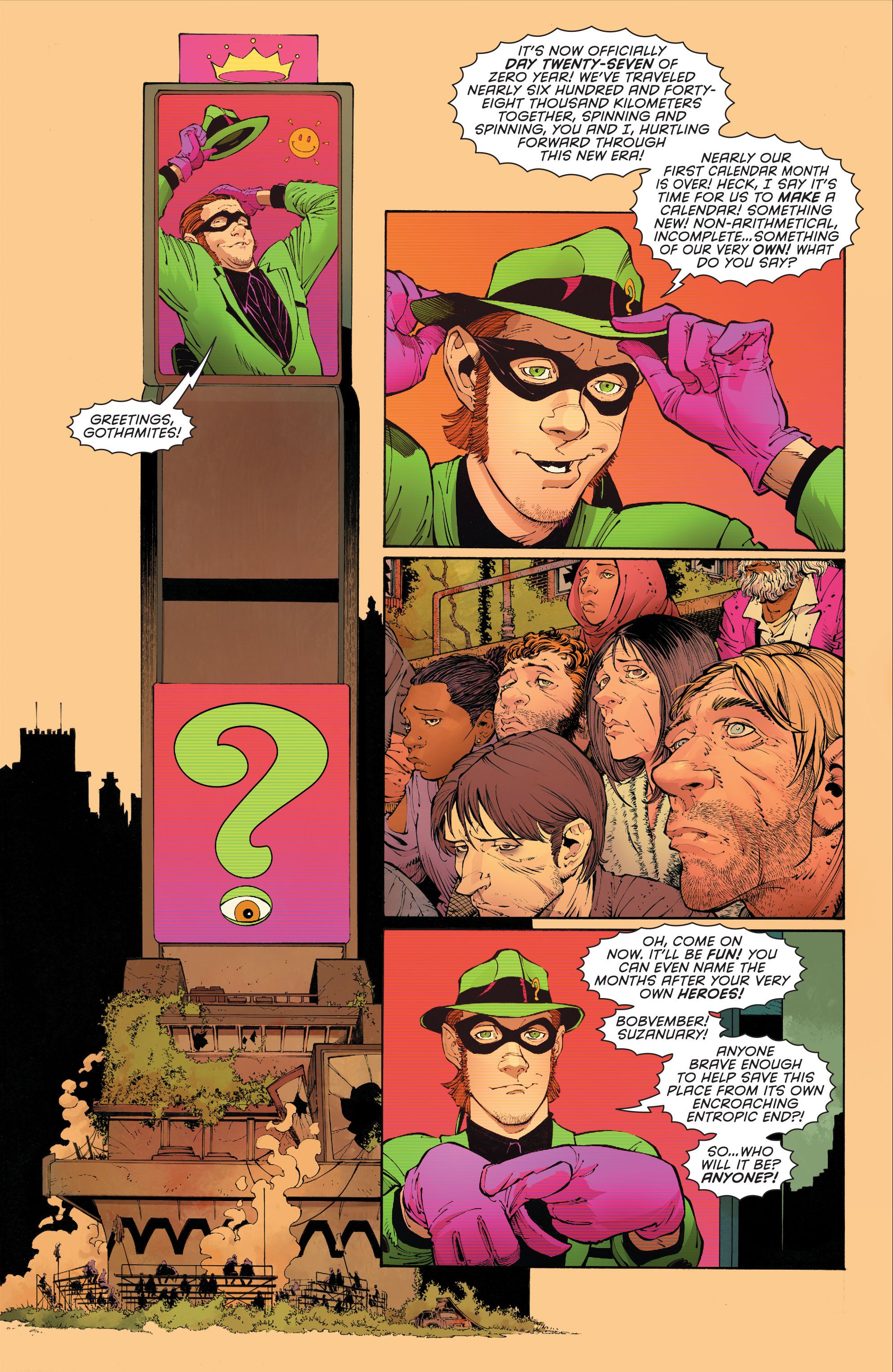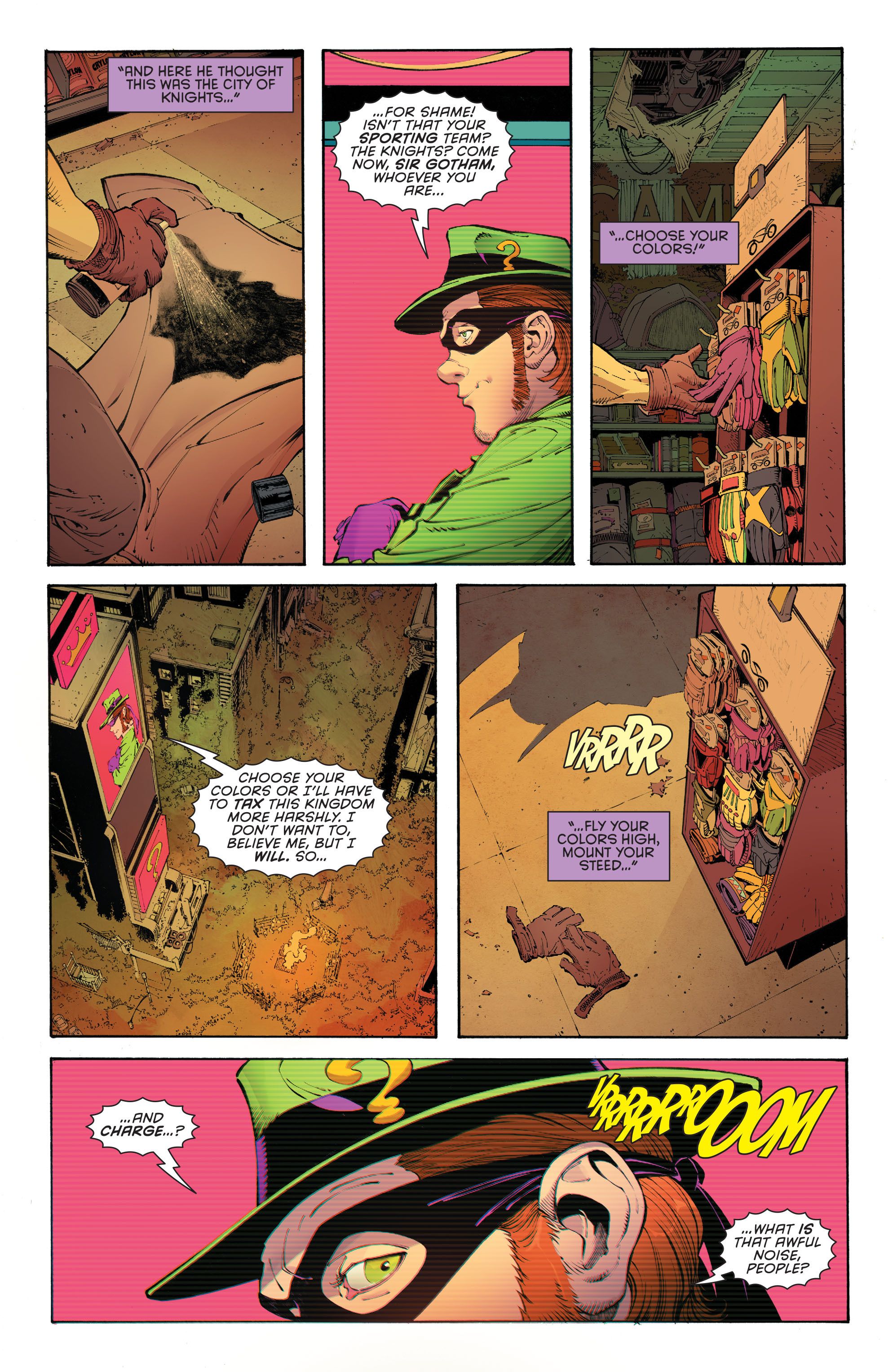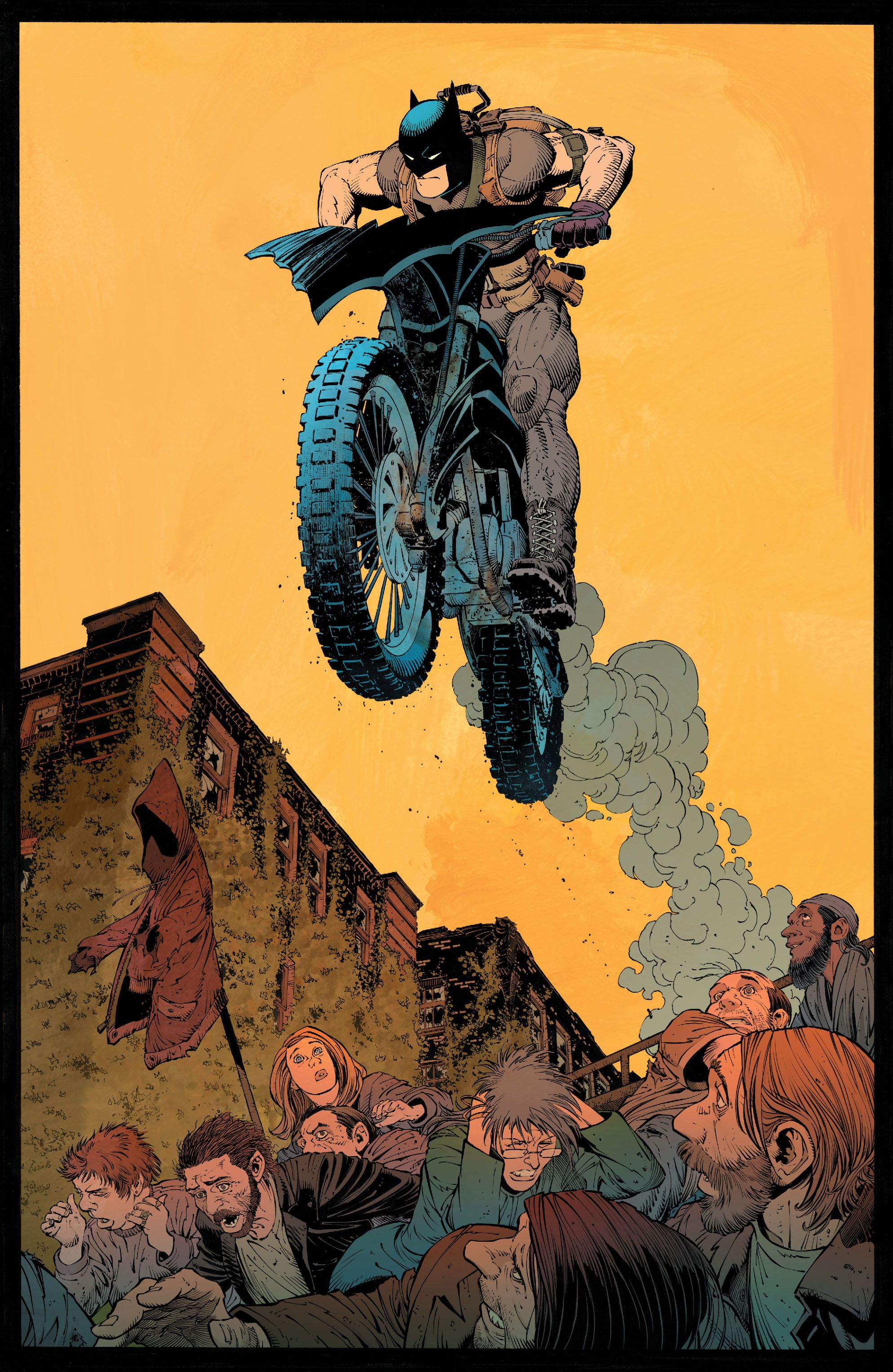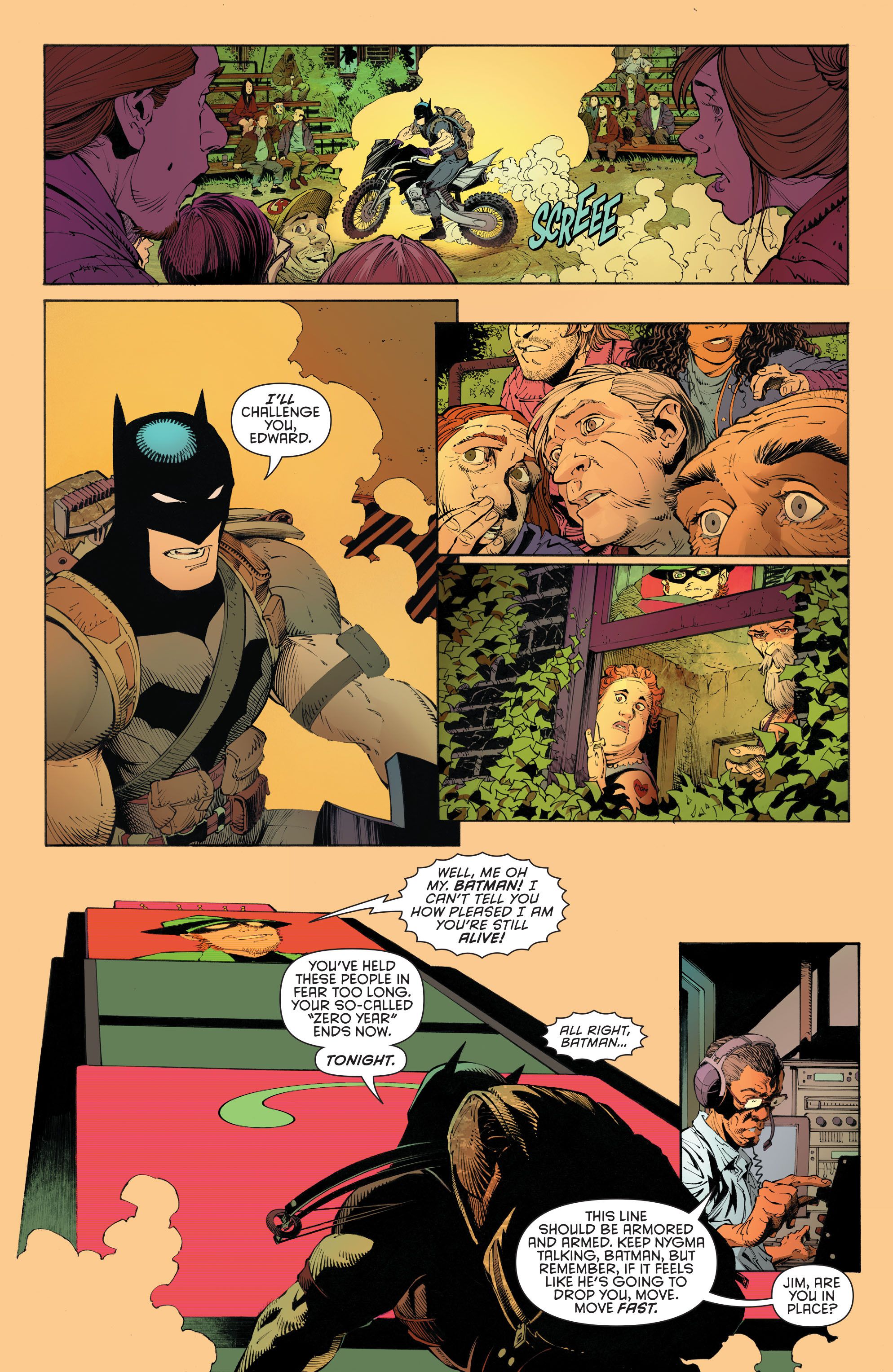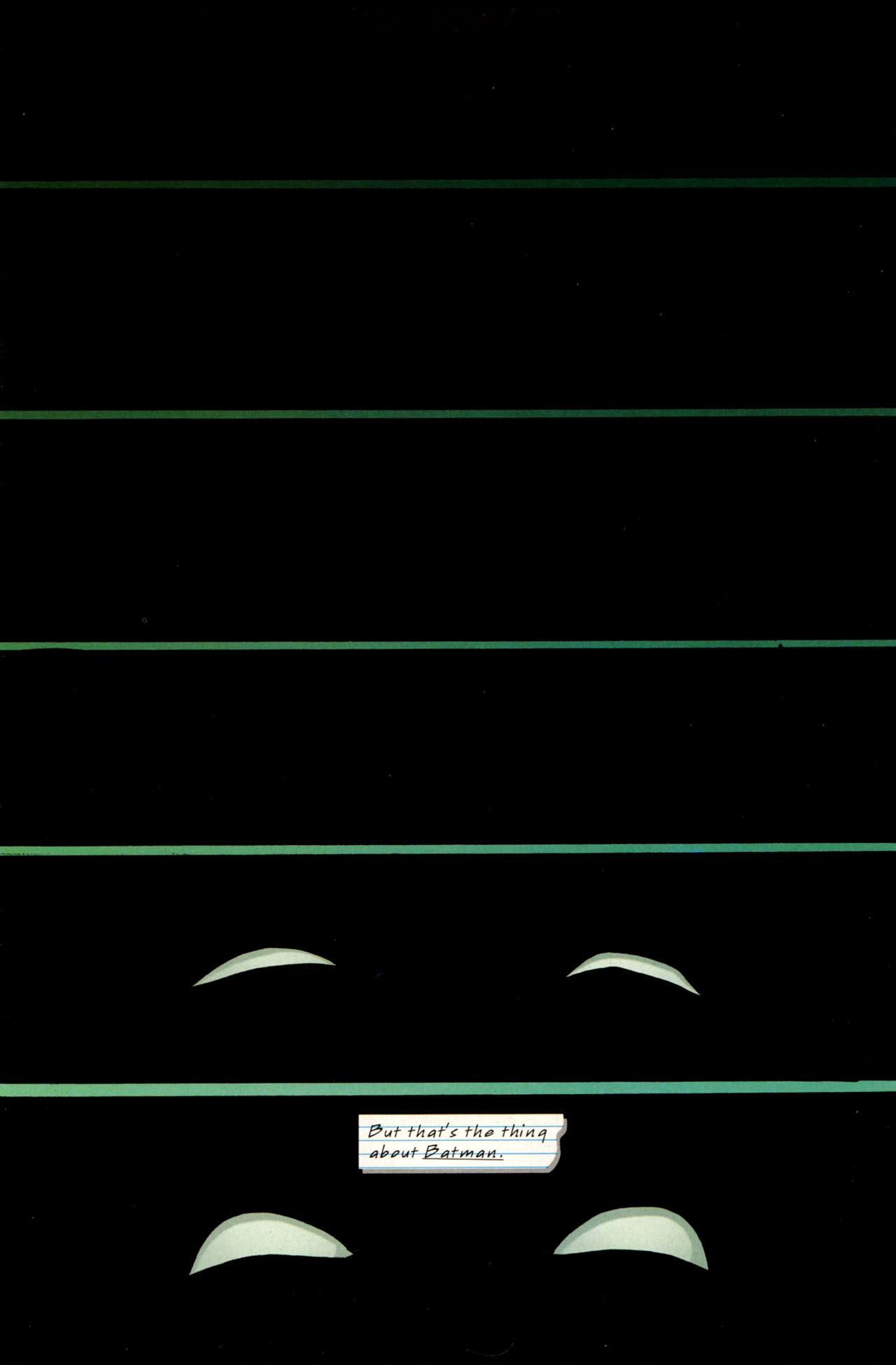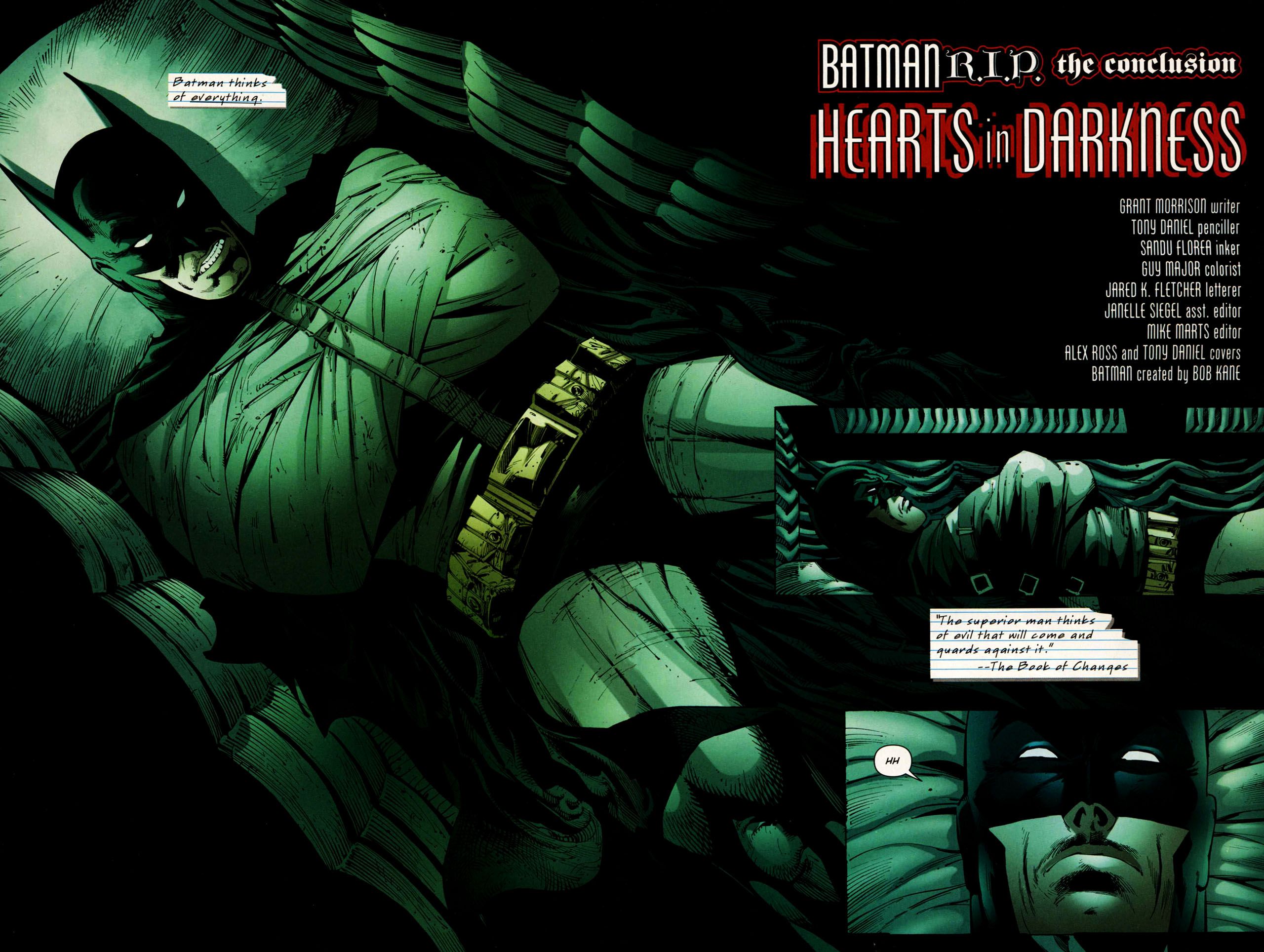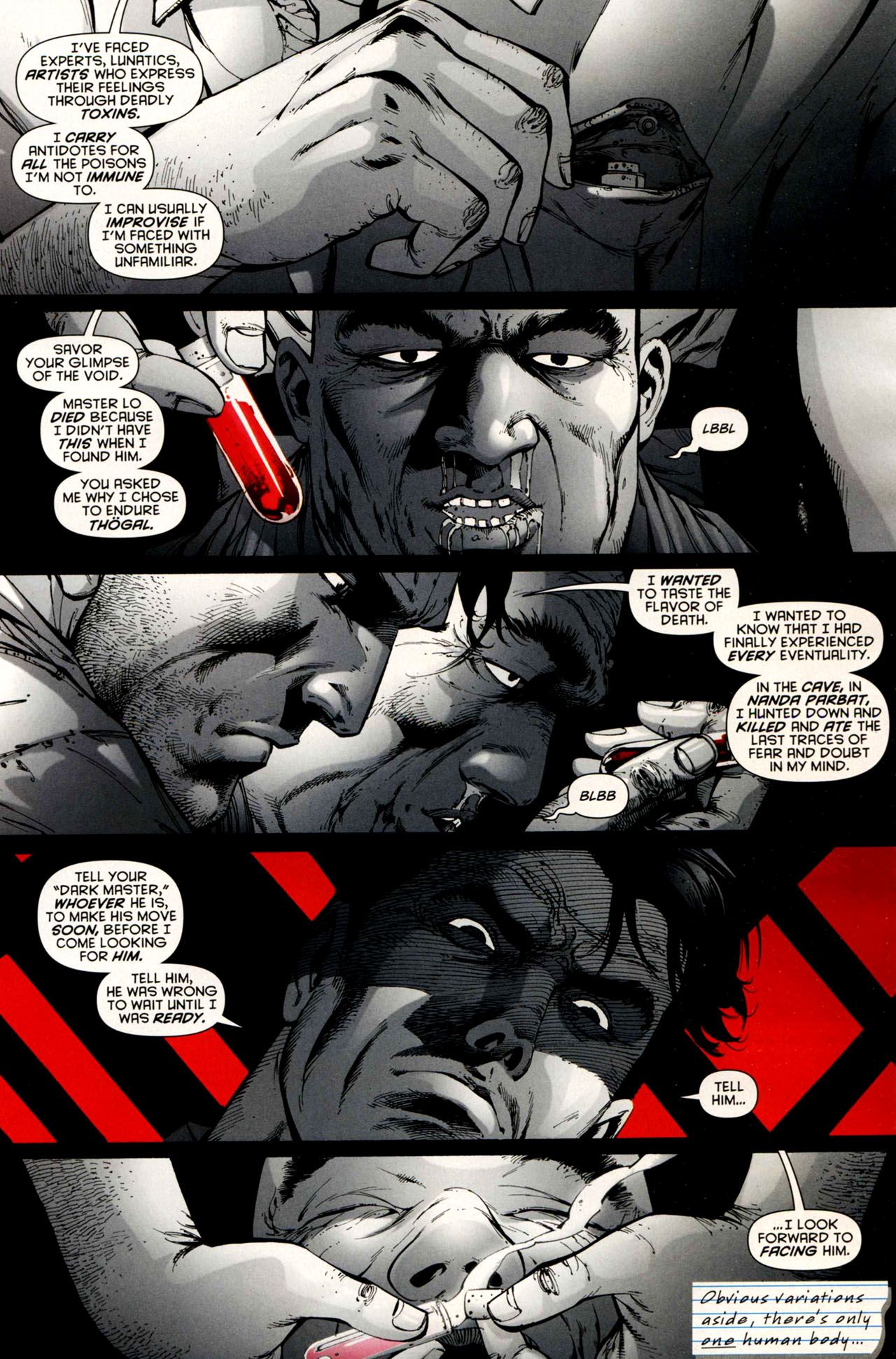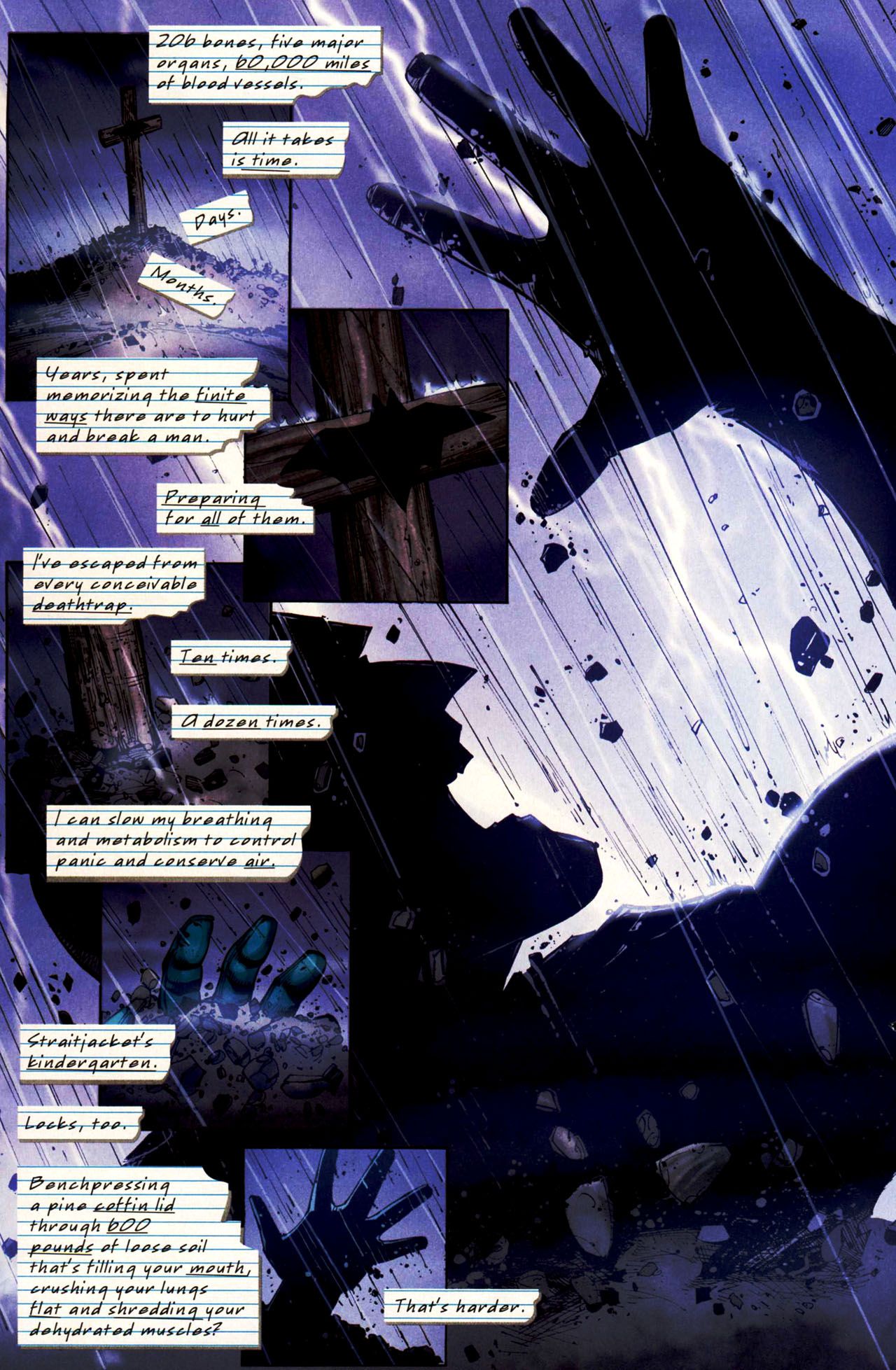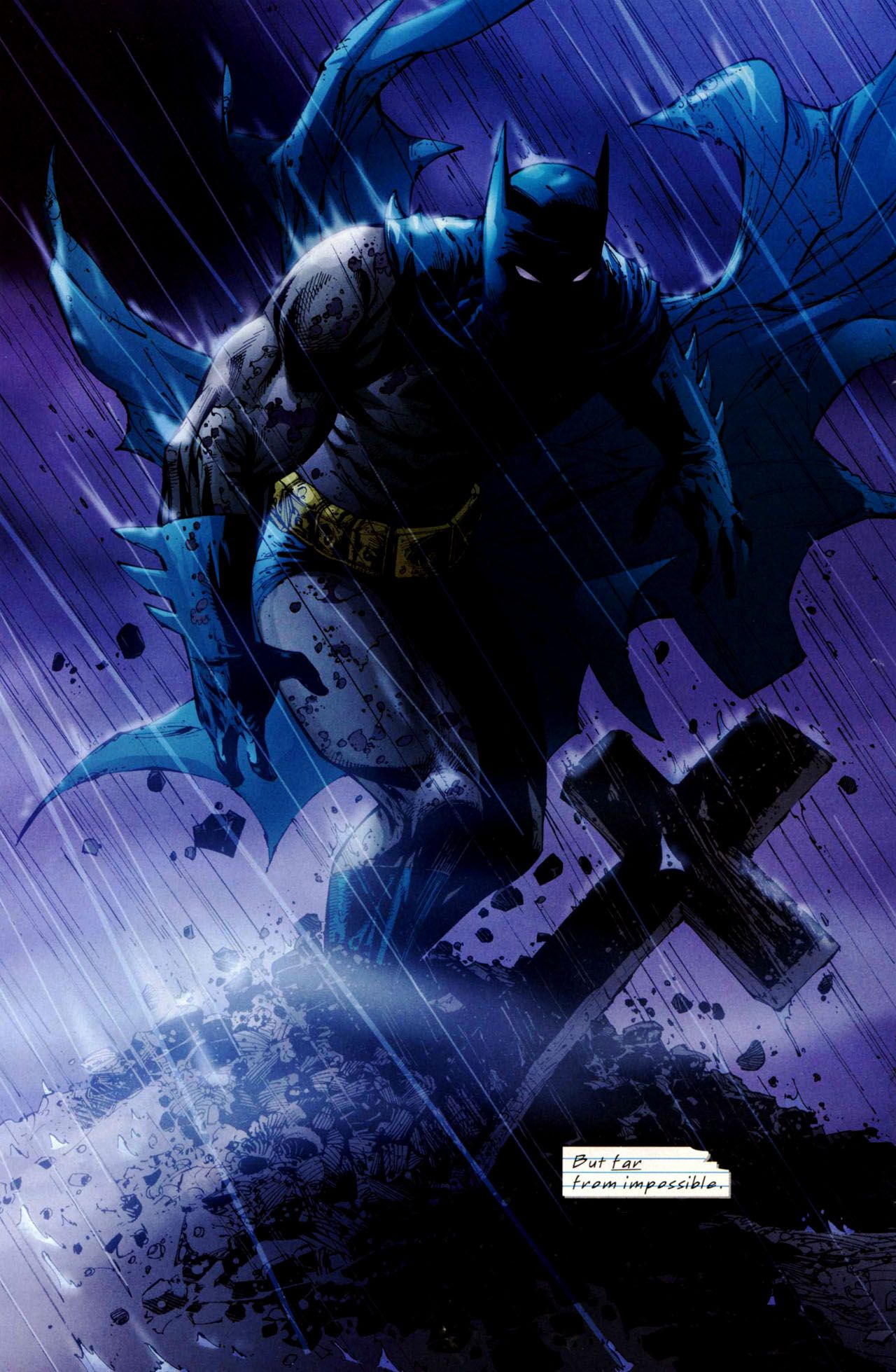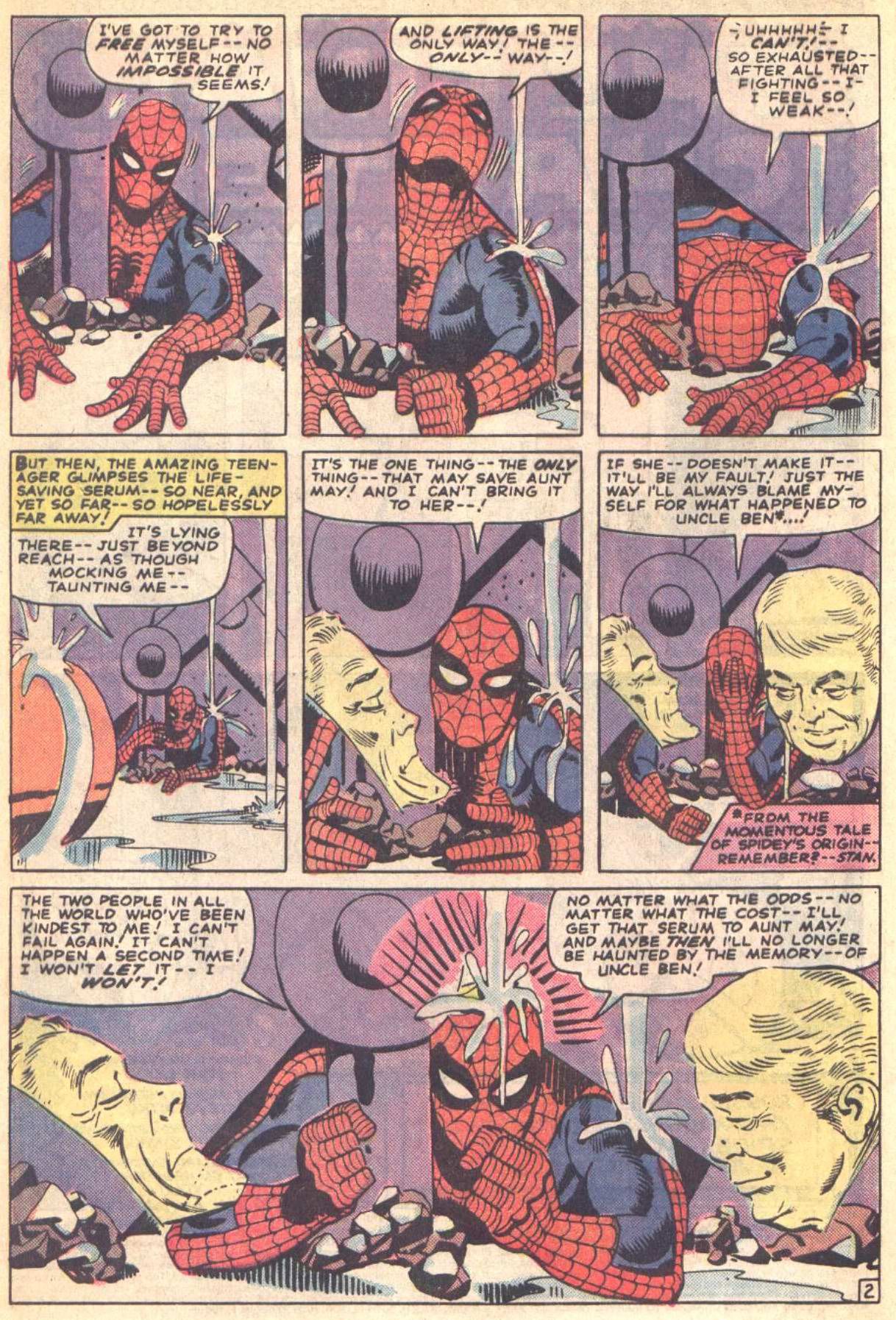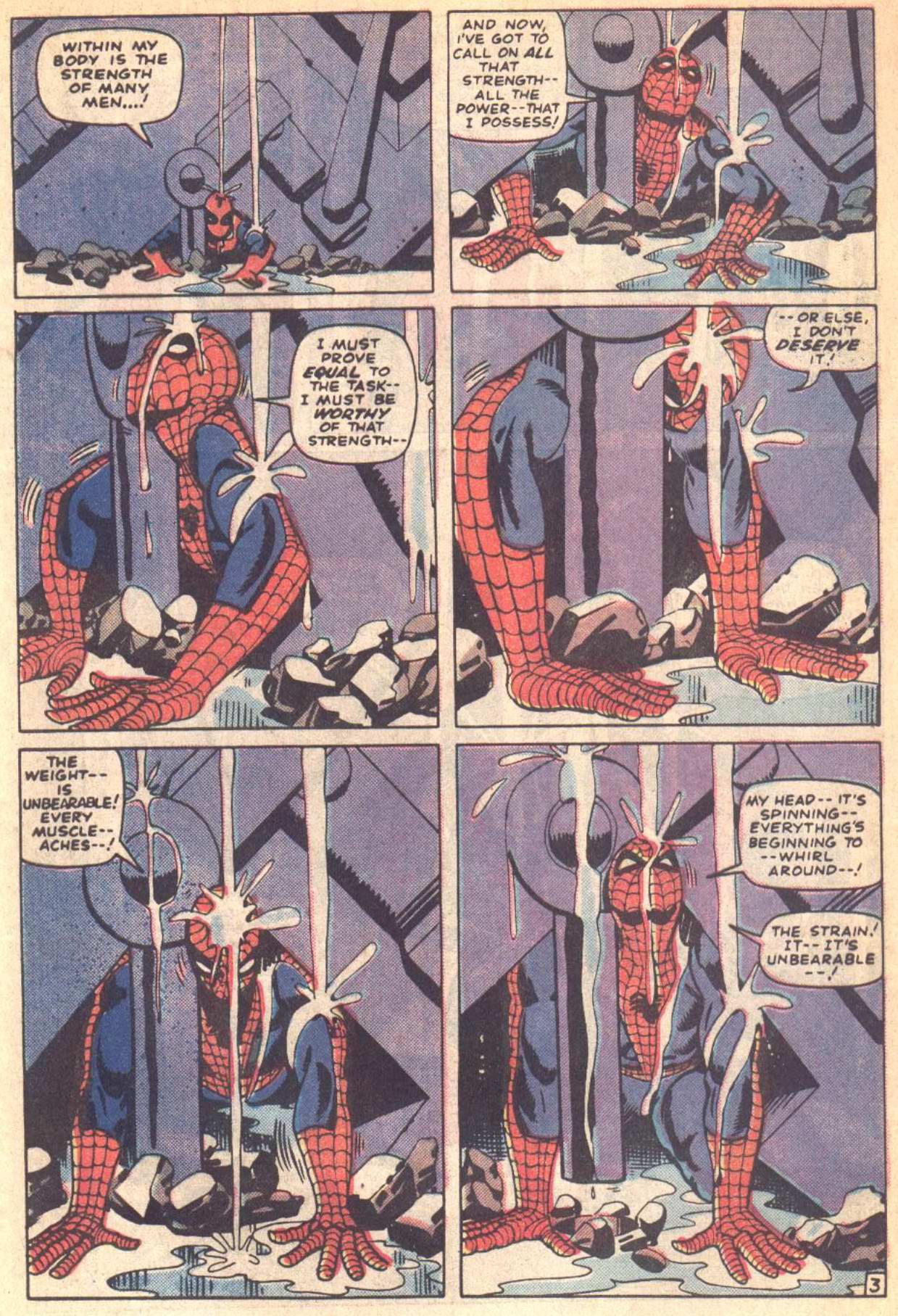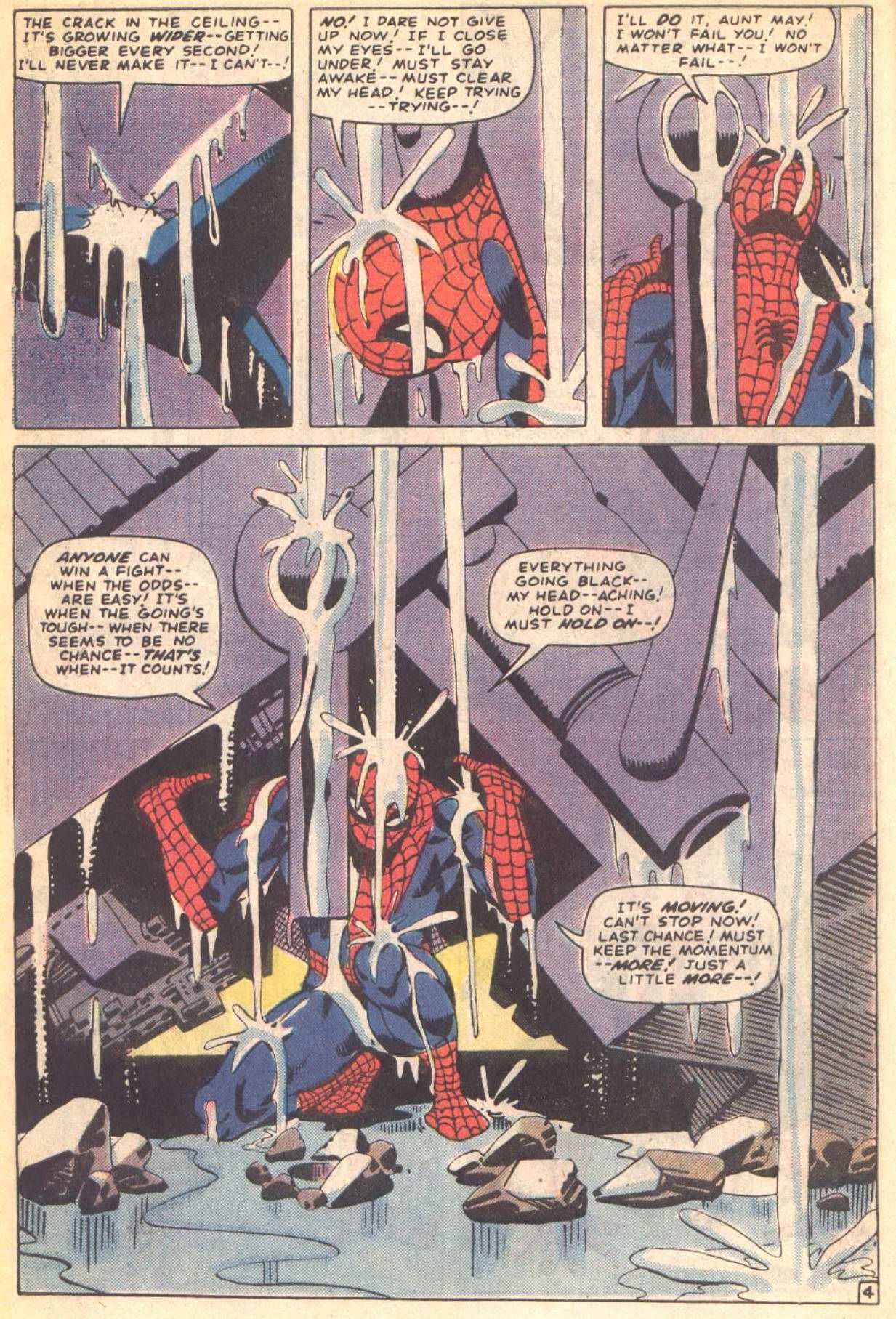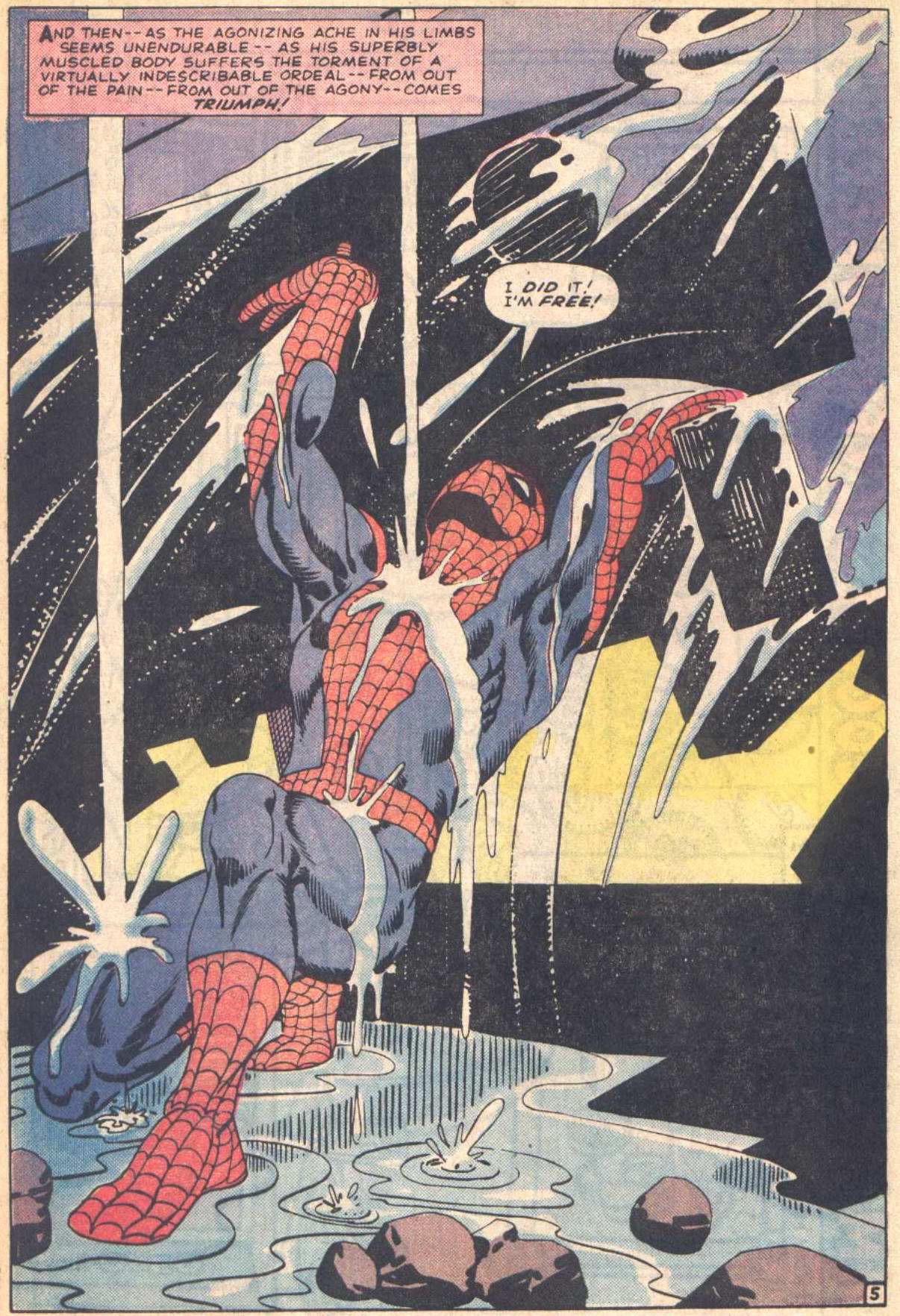You voted, and now, after over 1,000 ballots were cast, here are the results of your votes for your favorite comic book creator runs of all-time (this is the third time we've done this countdown. We're on an every four year schedule)!
To recap, you all sent in ballots ranking your favorite runs from #1 (10 points) to #10 (1 point). I added up all of the points and here we are! You can check out the previous installments in the countdown here.
10. Geoff Johns' "Green Lantern" - 812 points (24 first place votes)
"Green Lantern: Rebirth" #1-6, "Green Lantern" #1-67, "Blackest Night" #1-8, "Green Lantern" (New 52) #1-20
Geoff Johns had already done significant work with Hal Jordan before he took over the "Green Lantern" title. Johns was the fellow who had Hal Jordan become the new Spectre during the "Day of Judgment" crossover. However, a few years later, Johns was given the arduous task of not only redeeming Hal Jordan, but essentially “fixing” everything that had happened after Hal Jordan went nuts in the mid-1990s.
Johns introduced a twist on the Parallax idea by introducing the concept of Parallax as an independent being that possessed Hal Jordan and turned him evil. By the end of "Green Lantern: Rebirth," Hal Jordan was back as Green Lantern, as was John Stewart and Guy Gardner (Johns stripped away the “alien shapeshifter” aspect of Guy). Plus, Sinestro returned as a villain.
Johns then launched a brand-new "Green Lantern" series starring Hal and John.
Johns soon started what is likely the defining aspect of his "Green Lantern" run (well, unless “bringing Hal Jordan back from the dead” is what his defining aspect is – I guess it is a close call either way), which is the introduction of Sinestro having his own Corps of YELLOW light-based villains. This introduced the concept of the multi-colored corps, which persist to this day as a major aspect of the DC Universe (yellow for fear, red for anger, violet for love, blue for hope, indigo for folk rock, black for death, orange for avarice and white for life).
Johns also spent a lot of time developing Hal Jordan’s back story, and in fact, his "Secret Origin" storyline with penciler Ivan Reis became must of what the film, Green Lantern, was based on. Green Lantern later played a major role in the massive "Blackest Night" crossover (as the Black Lanterns spun out of the Green Lantern titles).
After the New 52, in the relaunched "Green Lantern" title, Sinestro was given a Green Lantern ring and the book became a bit of a buddy title for awhile spotlighting the tension of Sinestro and Hal being forced to work together against the secret machinations of the Guardians of the Universe, who are beginning to seem a lot more creepy than normal. Then Johns took Hal and Sinestro out of the title and introduced a brand-new Green Lantern, an Arab-American names Simon Baz, who had his own unique take on being a Green Lantern. This all led to one final story by Johns before leaving the series.
Johns was blessed to work with a number of amazing artists during his time on Green Lantern. Ethan Van Sciver did Rebirth, Carlos Pacheco launched the first new title with Johns (Van Sciver did some early issues, as well). Then Ivan Reis took over for a few years and the last few years were drawn by Doug Mahnke.
9. Walter Simonson's "Thor" - 887 points (19 first place votes)
"The Mighty Thor" #337-355, 357-382 (writer/artist for #337-354, 357-367, 380)
There’s not much cooler of a way to introduce yourself to a title then to break the old logo of the book in your first issue and debut a new logo the next one. And that’s just one of the dramatic things Walter Simonson did with his first issue of "Thor," a book that was not selling particularly well, so Simonson had a great deal of freedom to TRY these dramatic things. The other dramatic event in the first issue of Simonson’s "Thor" was just WHO it was that was wielding Thor’s hammer on the cover – some weird looking creature!
Beta Ray Bill, the noble alien who was found to be worthy enough to wield Mjolnir, was an attempt to shock readers, and to give his book a try, as Simonson spent the next thirty issues or so both writing and drawing an eventful time in the world of Thor, as Simonson used his extensive knowledge of Norse mythology as the foundation for his stories, which were a bit more serious and true to Norse culture than previous writers.
Simonson’s stories were mostly plot-driven, but he gave a number of interesting character moments along the way, as well, and of course he delivered that fantastic, stylized dynamic artwork that he is so well known for using.
There was a major story with a fight between Odin and Surtur that took advantage of Simonson’s ability to draw really outstanding fight scenes, but perhaps the most notable storyline during his run was when a number of souls of living Earth people are trapped in the land of Hel. Thor, Balder and a few other people lead a rescue mission to save them, and the evil toady of the Enchantress, Skurge the Executioner, asks to be allowed to help, too. At the end, when they are about to be overrun at a bridge by the hordes of Hel right before becoming free, Thor vows that he will stay behind and hold off the hordes himself while the humans escape. Skurge knocks Thor out, and while everyone at first thinks he is being a traitor, he is instead opting to take Thor’s place.
It’s an amazing sequence of events, beautifully written and drawn by Simonson.
Soon after, Simonson concluded his run as an artist with an amusing story involving Thor being turned into a frog.
Then Sal Buscema joined the book as the artist, and Simonson continued a long story he had in which Thor is slowly beaten and scarred by battles, to the point where he is forced to grow a beard to cover his scars and wear a special suit of armor to maintain his strength. During this time, Thor takes on a new secret identity (Don Blake had been eliminated as Thor’s alter ego) of basically Thor wearing a pair of glasses, as a nod to Superman/Clark Kent.
The next few issues have a LOT of crossovers with various other books Simonson was involved with at the time, mostly X-Factor, and finally, his run concludes with a tremendously ambitious storyline including the Destroyer and the Midgard serpent. A classic finale to a classic run.
Oh, I would be remiss if I did not mention the amazing lettering John Workman did on this series. Amazing stuff.
8. Scott Snyder and Greg Capullo's "Batman" - 1019 points (20 first place votes)
"Batman" (Vol. 2) #1-51
Scott Snyder was already coming off an acclaimed run on "Detective Comics" with artist Jock when he was given the opportunity to relaunch "Batman" as part of DC Comics’ New 52. Now in charge of the “main” "Batman" comic, Snyder’s opening storyline was an epic tale introducing the Court of Owls, a mysterious organization that has ruled Gotham City from the shadows for years. The whole Court of Owls storyline is one that was ideally suited for Batman, as Snyder knows that this is exactly the type of story that fits a dark character like Batman. For a guy like Batman, whose past is such a driving force in his life, Snyder uses the past to drive the storyline (along with a few neat mysteries and twists along the way). It is a horror/mystery that uses all the things that make Batman great – detective work, an expansive supporting cast, horror and, of course, outlandish villains.
Capullo, of course, was heavily involved in making the story work, with his dynamic action sequences and his expertly creepy designs of the villains.
Their second major storyline took a new look at the relationship between Batman and Joker, as we see that perhaps what was really happening with Batman and Joker over these years has been a twisted sort of love story.
They then told a massive epic storyline called "Zero Year," looking at the early time of Batman and it really pumped up the Riddler as a villain, as he basically conquered all of Gotham City. Check out how much Capullo's dynamic pencils (ably aided here by the great Danny Miki, who inked most of the run, with Jonathan Glapion inking the first year plus) add to this excellent sequence...
After an epic storyline with Joker now wishing to "end" things against Batman, this led to Commissioner Gordon taking over as Batman for a time before Bruce Wayne's triumphant return to the Batman mantle, just in time for Snyder and Capullo's run to end.
Snyder, though, is currently doing a cool "All Star Batman" series. He and Capullo will be doing some future "Batman" work together.
7. Grant Morrison's "Batman" - 1036 points (22 first place votes)
"Batman" #655-658, 663-683, 700-702, "Batman and Robin" #1-16, "Batman: The Return of Bruce Wayne" #1-6, "Batman Inc." (Vol. 1) #1-8, "Batman Incorporated" #1-12 plus a few one-shots mixed in there, like "Leviathan," "Batman: The Return" and "Batman Incorporated" #0
If there was an overarching theme from Grant Morrison’s epic "Batman" run it was the concept of “everything happened,” the idea that all of the stories that Batman has gone through over the years have actually happened to him, so how does one deal with such an outrageous backstory?
The first example of this came in Morrison’s first storyline, where the once out-of-continuity "Son of the Demon" graphic novel (where Talia Al Ghul appears to bear Batman’s child) suddenly became IN continuity, as Morrison introduced their progeny as Damian Wayne, Batman’s son. A child torn between an assassin mother and a superhero father, Damian clearly became the break out character of Morrison’s run.
Morrison continued the “everything happened” theme in the finale of the first chapter of his run on Batman, "Batman R.I.P." where he introduces the theory that if everything that had happened to Batman really happened to somebody, they’d be insane, right? And in "Batman R.I.P.," Batman indeed appears to go insane, driven there by the evil organization known as the Black Glove. Things are so bad that he's captured and buried alive. However, that’s the thing about Batman…
Yep, Batman had been preparing for the Black Glove for months, all the way back to when Batman’s life was threatened by the Black Glove’s agents…
Awesome.
This first chapter of Morrison’s run fully came to an end with "Final Crisis," where Batman is captured by Darkseid and is attempted to be cloned to form an army of Batmen for Darkseid. Here, though, Morrison explicitly shows us that yes, all of Batman’s life experiences WOULD drive someone insane…unless they actually WERE Batman. That his ability to deal with all of this stuff is basically HIS superpower. After Batman stops Darkseid’s plans, Darkseid gets revenge by blasting Batman back to the Stone Age and using one of the dead clones to trick people into thinking Batman was dead.
With Batman now seemingly dead, we entered the second chapter of Morrison’s three-chapter run, where he launched a new Batman series called "Batman and Robin," where Dick Grayson takes over as Batman and Damian becomes the new Robin. Unlike the original idea of Batman being the dark character and Robin the light one, this new duo had the opposite dynamic. After a nice stint of cool superhero stories, Bruce returned in the "Return of Bruce Wayne" mini-series (where we learn that Batman was finding a way to return to his own time, but in doing so, he might be doing exactly what Darkseid wants).
His return leads to the final chapter of Morrison’s three-chapter run. Batman decided that he needed to basically form an army of Batmen, so he does so, calling the idea Batman Incorporated. This is basically an extended riff over the old Batman concept of the International League of Batmen (something Morrison had used early in his run). Batman saw a glimpse of the future in his return to the present, and he realized he needed an army to stop the evil Leviathan, who turned out to be Talia Al Ghul. We then learned whether Talia would sacrifice even her own son to pursue her evil agenda. It's some sad stuff.
During Morrison’s run, the artists on his run have mostly been Andy Kubert (who launched the run with him), Tony Daniel (who did "Batman R.I.P."), Frank Quitely (who launched "Batman and Robin"), Yanick Paquette (Who launched "Batman Inc.") and Chris Burnham (who finished the first volume of Batman Inc. and did most of the final volume). He had a bunch of other great artists mixed in for arcs or single issues, though, including J.H. Williams III, Frazer Irving, Cameron Stewart, Chris Sprouse, Ryan Sook, a veritable smorgasbord of good artists (and, okay, there have been some bad ones mixed in, as well. We won’t name names there).
6. Steve Ditko and Stan Lee's "Spider-Man" - 1242 points (25 first place votes)
"Amazing Fantasy" #15, "Amazing Spider-Man" #1-38, plus two Annuals
Simply put, these are the two guys who literally CREATED Spider-Man. The forty-one issues that the two did together contain pretty much everything you need for a Spider-Man comic book today.
Heck, just a cursory look at the characters that they invented is staggering. Peter Parker. Aunt May. Uncle Ben. Flash Thompson. J. Jonah Jameson. The Vulture. Doctor Octopus. Sandman. Chameleon. Electro. Lizard. Green Goblin. Kraven the Hunter. Mysterio. Betty Brant. Harry Osborn. Gwen Stacy. Liz Allen.
And, of course, most memorably, Fancy Dan.
But simply naming characters that they created is only getting a surface look at what Ditko and Lee did to comics with Spider-Man. Lee had already done the whole “Superheroes with real life problems” idea in Fantastic Four, but Ditko and Lee took it to a whole other level with Spider-Man. When there was a happy ending in an issue of Spider-Man, it was a shocker! And yet, even as Peter Parker went through personal trauma after personal trauma after personal trauma, it never made the book feel like it was just a sludge. That is in part because of Lee’s scripting, which always tempered Ditko’s plots with a certain devil-may-care attitude that, hey, as bad as things are, you gotta keep going.
As for the art on the series, Steve Ditko is one of the all-time great superhero/supervillain designers, coming up with a variety of costumes that are basically used today to the TEE. Spider-Man has had another costume, but really, the blue and the red costume is what he wears in the comics today and in all of the media adaptations (although the new movie is slightly different). And 50 years later, it is still that same Ditko design. Characters like Elektro, Vulture and Mysterio have gone through various looks but they always return to that awesome Ditko design.
Green Goblin, Kraven, Fancy Dan, the list goes on of iconic character looks that Ditko created.
But not only that, Ditko is a brilliant sequential storyteller, able to pack in SO much story into every issue of Amazing Spider-Man. These things are like freaking TOMES! The origin of Spider-Man in Amazing Fantasy is, like, a page and a half (okay, 11 pages) and Ditko makes it feel like it is seven issues long. The same continued in his run on Amazing Spider-Man. He packed SO much story into every issue while never making the panels boring.
This is, of course, highlighted by perhaps the single most famous sequence in Spider-Man history, a bit that has “inspired” countless Spider-Man stories ever since, the classic Amazing Spider-Man #33, which combines Ditko’s powerful storytelling abilities with the general direction of Lee/Ditko stories – things are really shitty, but Spider-Man has to keep on keeping on…
The combination of Ditko’s compelling plots and Lee’s snappy dialogue made this pair a dream team that we will likely never see again, a pairing where each man needed the other for the book to be as transcendentally popular as it became.

